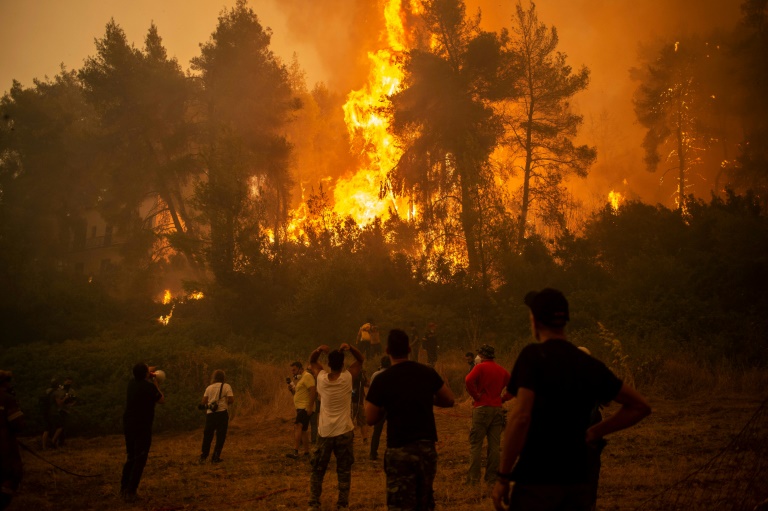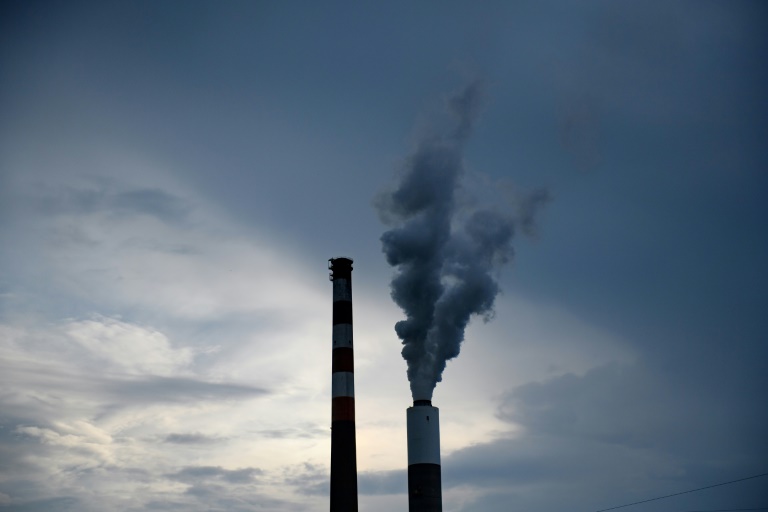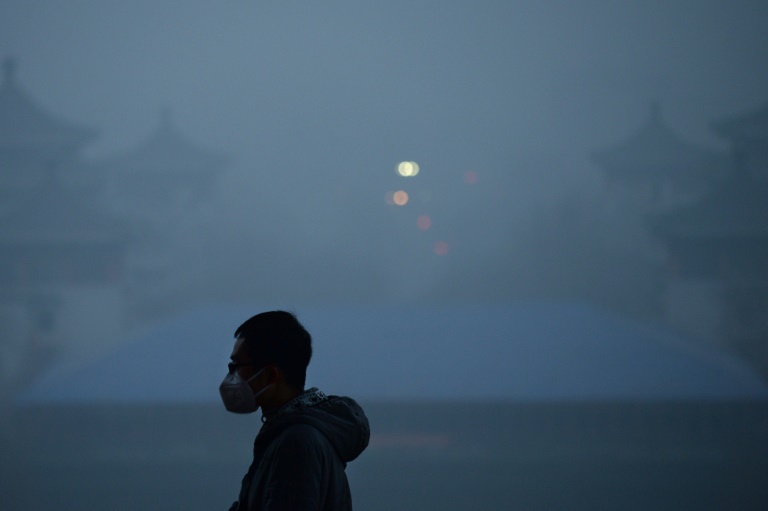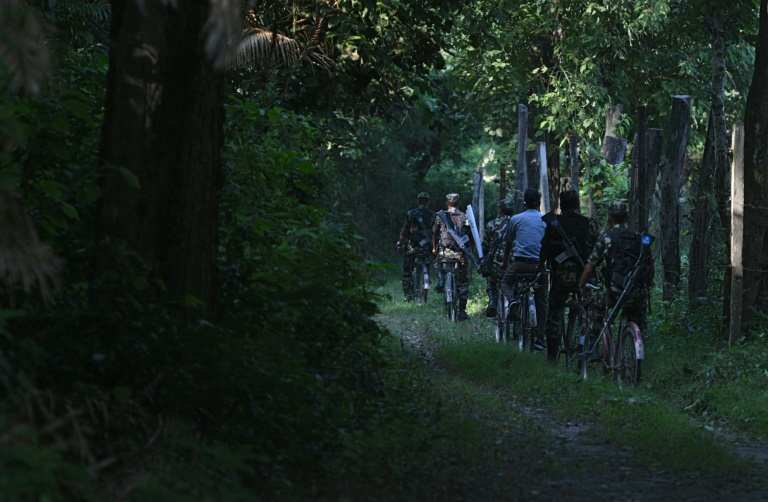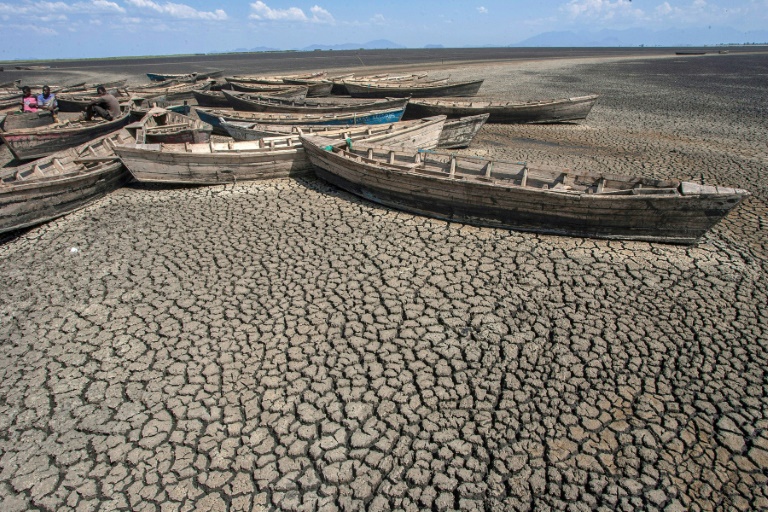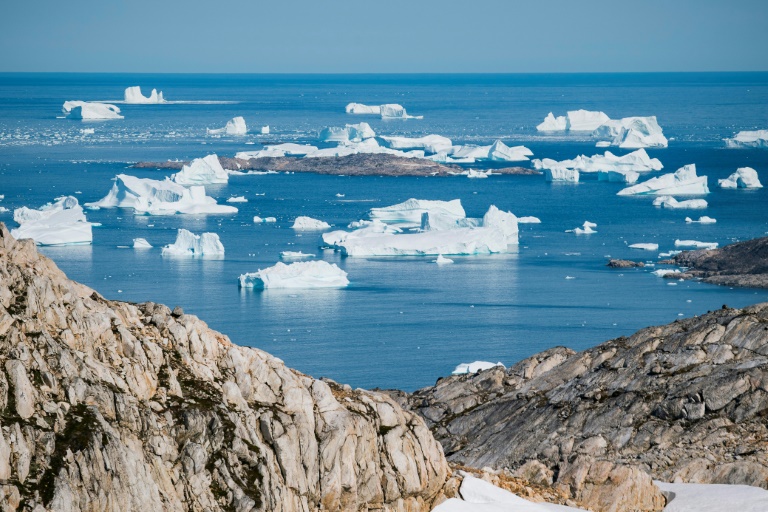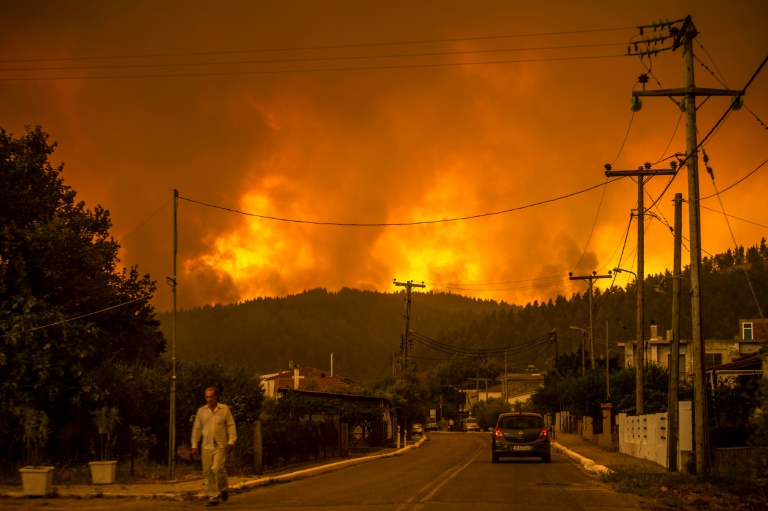Firefighters try to contain wildfire destruction on Greek island
Firefighters on Monday battled heat and suffocating smoke for a seventh consecutive day to try to save the Greek island of Evia from wildfires that have wiped out hundreds of homes and forced thousands to flee.
Greece and Turkey have been battling devastating blazes for nearly two weeks as the region suffers its worst heatwave in decades.
Greek officials have already blamed climate change for the extreme heat, and the UN released a major report on Monday showing how the threat from warming is even more acute than previously thought.
Two people have been confirmed dead in Greece and eight in Turkey, while dozens have been hospitalised.
Greece said vital aerial reinforcements were en route to Evia to help firefighters, with Russia and Turkey promising to help.
Many of the other fires that have hit Greece have stabilised or receded, but on Evia — Greece’s second largest island after Crete — the blazes are being helped by wind and a rugged, forested landscape.
– Mass evacuations –
Firefighters told local media their priority was to stop the fires from reaching thick forest in the north of Evia.
Some residents said they had ignored evacuation orders to stay behind and save their homes.
As the sweeping wall of fire laid siege to one village after another in the north of the island, firefighters toiled to protect the town of Istiaia.
Thick and suffocating smoke on Monday also enveloped the coastal region of Pefki, where hundreds of villagers had been evacuated by sea.
The Greek coastguard said over 2,700 people had been evacuated by its forces and by private vessels over the last 10 days, most of them from Evia.
This included some 350 people evacuated from villages around Pefki, many of whom spent the night in a ferry moored near the long beach.
Looming in the haze offshore, a military ship awaited further evacuees.
The ferry “was the only place where people could get a little peace and security”, military official Panagiotis Charalambos told AFP.
Like many nearby communities, Pefki “had no electricity or water”, he said.
“Here, the people lived from the forest, from the crops, olives and tourism. There’s nothing of that left now,” said Louisa, a pensioner in Pefki.
In the town of Aidipsos, collections of basic necessities were organised for villagers who had lost everything in the fire.
– ‘Desperately alone’ –
While rain brought some respite from the blazes in Turkey over the weekend, Greece has this month suffered an intense heatwave that Prime Minister Kyriakos Mitsotakis said should show the hard reality of climate change even to doubters.
The UN’s Intergovernmental Panel on Climate Change laid bare the challenges facing the planet with a major report on Monday.
The IPCC said global temperatures would probably hit the level of 1.5 degrees Celsius above pre-industrial levels by around 2030 — a decade earlier than it projected just three years ago.
Meanwhile the EU said it was mobilising “one of Europe’s biggest ever common firefighting operations” to assist Greece and other countries.
The response was needed “as multiple fires affect several countries simultaneously”, EU crisis management commissioner Janez Lenarcic said.
From July 29 to August 7, 56,655 hectares (140,000 acres) were burnt in Greece, according to the European Forest Fire Information System.
The average area burnt over the same period between 2008 and 2020 was 1,700 hectares.
Some 650 firefighters have so far been deployed on Evia, according to Greek authorities.
Greek opposition parties have accused the government of failing to adequately deploy air support to some of the fires.
“Local officials and citizens cry out that they are desperately alone… for how long will this drama endure?” main opposition leader Alexis Tsipras tweeted on Sunday.
Mitsotakis said on Monday he discussed with his Russian counterpart Mikhail Mishustin the delivery of an additional giant BE-200 water bomber.
Neighbour and traditional rival Turkey also pledged two fire-fighting aircraft, the Greek foreign ministry said.
Civil protection deputy minister Nikos Hardalias has said that water bombers have faced “serious difficulties” including turbulence, thick smoke and limited visibility.
The civil protection authority on Monday said EU states and other countries had contributed 21 aircraft, 250 vehicles and over 1,200 firefighters, some of whom were expected between Tuesday and Friday.
The situation looked better elsewhere, with officials saying that fires in the southwestern Peloponnese region and in a suburb north of Athens had abated. A fire on Crete was brought under control.

